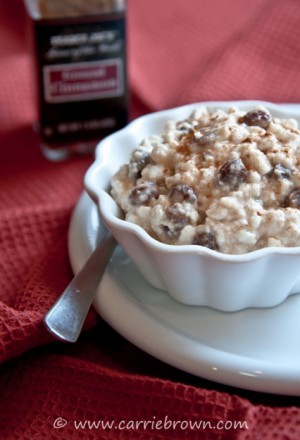In the last post we covered the importance of healing our hormones rather than starving ourselves or spending hours on stair-steppers. Now let’s start to dig into why focusing on hormones instead of calories in and calories out is critical to solving the metabolic cause of chronic fat gain and sub-optimal health.
“Short-term [hormonal] signals are primarily from the GI tract [digestive system]…and are involved in promoting sensations of satiety…. The long-term [hormonal] signals insulin and leptin are produced and circulate in proportion to recent energy intake and body adiposity [body fat]. Together, the short- and long-term [hormonal] signals interact to regulate energy balance…” – P.J. Havel, University of California
Translating Dr. Havel’s insightful technical commentary, our digestive system, muscle tissue, and fat tissue are constantly communicating with our nervous system and brain via hormones. Our body “speaks” hormones…not calories. It is discussing how much fuel it thinks we need to keep us at our set-point. If our body thinks we are at risk of rising above our set-point weight, it automatically decrease our calories in and increase our calories out, and vice versa.

When we eat SANE high-quality calories, this conversation goes well. The right amount of hormones are used and the right message gets across: “Burn surplus body fat.” When our hormones are able to do their job, we have the ability to burn body fat, and away our surplus body fat goes.
However, when we eat inSANE low-quality calories, communication breaks down. Our body doesn’t have a good idea of how much fuel we need, hormones go bonkers, and our body demands more food since it does not know what is going on and errs on the side of not starving. Thanks to this communication breakdown, we end up overeating, hormonally clogged, and heavier.
To gain a deeper understanding of this communication breakdown, and how we can prevent it, in the next post we’ll look at a specific hormone—insulin—and its role in this process. Insulin is a good choice because it is known in scientific circles as, “The most important hormonal factor influencing lipogenesis [body fat creation].”
- Carlson MG & Campbell PJ. Intensive insulin therapy and weight gain in IDDM. Diabetes 1993 42 1700–1707.
- Hameed S, Dhillo WS, Bloom SR. Gut hormones and appetite control. Oral Dis. 2009 Jan;15(1):18-26. Epub 2008 Oct 17. Review. PubMed PMID: 18939959.
- Havel PJ. Dietary fructose: implications for dysregulation of energy homeostasis and lipid/carbohydrate metabolism. Nutr Rev. 2005 May;63(5):133-57.Review. PubMed PMID: 15971409.
- Havel PJ. Peripheral signals conveying metabolic information to the brain: short-term and long-term regulation of food intake and energy homeostasis. Exp Biol Med (Maywood). 2001 Dec;226(11):963-77. Review. PubMed PMID: 11743131.
- Havel PJ. Update on adipocyte hormones: regulation of energy balance and carbohydrate/lipid metabolism. Diabetes. 2004 Feb;53 Suppl 1:S143-51. Review. PubMed PMID: 14749280.
- Hoebel BG, Teitepoundaum P. Weight regulation in normal and hypothalamic hyperphagic rats. J Comp Physiol Psychol. 1966 Apr;61(2):189-93. PubMed PMID: 5909295.
- Joslin, Elliott Proctor, C. Ronald. Kahn, and Gordon C. Weir. Joslin’s Diabetes Mellitus. Philadelphia: Lea & Febiger, 1994. Print.
- Kersten S. Mechanisms of nutritional and hormonal regulation of lipogenesis. EMBO Rep. 2001 Apr;2(4):282-6. Review. PubMed PMID: 11306547; PubMed Central PMCID: PMC1083868.
- Laville M, Andreelli F. [Mechanisms for weight gain during blood glucose normalization]. Diabetes Metab. 2000 Jun;26 Suppl 3:42-5. Review. French. PubMed PMID: 10945152.
- MacKay, Eaton M., Callaway, James W., Barnes, Richard H. Hyperalimentation in Normal Animals Produced by Protamine Insulin: Three Figures J. Nutr. 1940 20: 59-66
- Murphy KG, Dhillo WS, Bloom SR. Gut peptides in the regulation of food intake and energy homeostasis. Endocr Rev. 2006 Dec;27(7):719-27. Epub 2006 Oct 31. Review. PubMed PMID: 17077190.
- Papoushek C. The “glitazones”: rosiglitazone and pioglitazone. J Obstet Gynaecol Can. 2003 Oct;25(10):853-7. Review. Erratum in: J Obstet Gynaecol Can. 2003 Nov;25(11):907. PubMed PMID: 14532954.
- Rosenbaum M, Vandenborne K, Goldsmith R, Simoneau JA, Heymsfield S, Joanisse DR, Hirsch J, Murphy E, Matthews D, Segal KR, Leibel RL. Effects of experimental weight perturbation on skeletal muscle work efficiency in human subjects. Am J Physiol Regul Integr Comp Physiol. 2003 Jul;285(1):R183-92. Epub 2003 Feb 27. PubMed PMID: 12609816.
- Sinha A, Formica C, Tsalamandris C, Panagiotopoulos S, Hendrich E, DeLuise M, Seeman E, Jerums G. Effects of insulin on body composition in patients with insulin-dependent and non-insulin-dependent diabetes. Diabet Med. 1996 Jan;13(1):40-6. PubMed PMID: 8741811.
